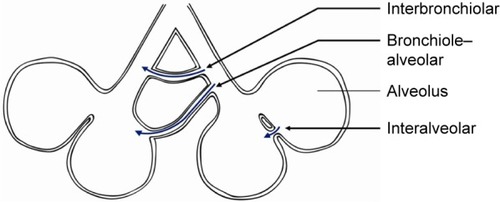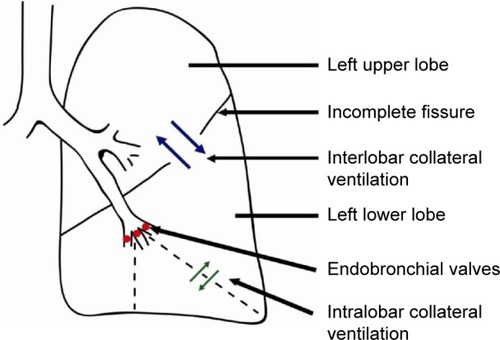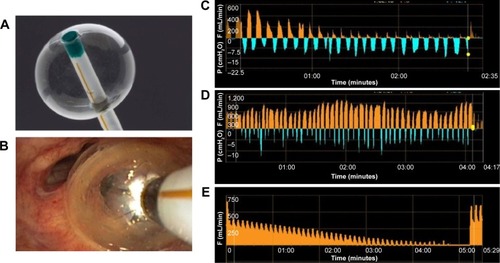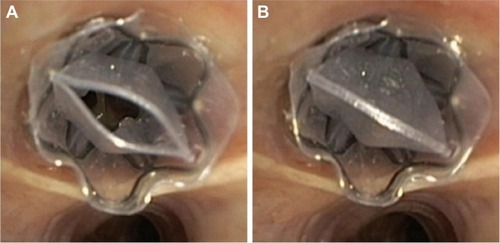Figures & data
Figure 1 Three different pathways for collateral ventilation.

Figure 2 Collateral ventilation.

Table 1 Prevalence of incomplete fissures
Figure 3 Chartis measurement.
Abbreviations: F, flow; P, pressure.

Figure 4 Implanted one-way endobronchial valve.

